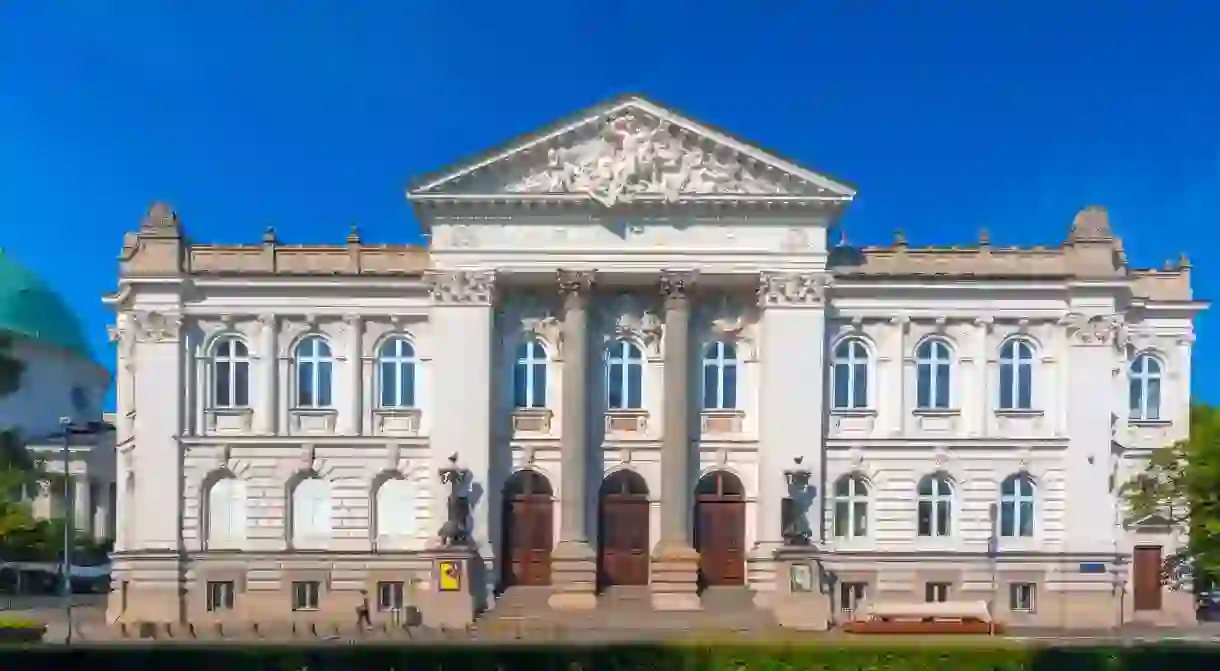10 Must-Know Contemporary Polish Artists And Where To Find Them

Poland is home to a dynamic and distinctive contemporary art scene and a legacy of avant-garde culture. It has a rich stock of exceptional and often controversial artworks exhibited across galleries and modern art museums locally and internationally. We profile ten must-know contemporary polish artists and where to find them.
Katarzyna Kozyra at Zacheta National Gallery of Art
Museum

Miroslaw Balka at Galeria Labirynt
Art Gallery
Miroslaw Balka graduated from Warsaw’s Academy of Arts in 1985, now a member of the Akademie de Kunste in Berlin. One of the finest contemporary Polish sculptors and video artists, he has exhibited his works in numerous international shows and in 2009 he presented his special project How It Is at the Unilever Series in Tate Modern, London. Born in Poland after the Second World War into a family of gravestone cutters and engravers, Balka is deeply influenced by his country’s history of war and memories of death. His ascetic sculptures reflect the vanishing of the body and memory and his artistic expression moved gradually from literal depiction of the human figure to an abstract expression. His works can be found in many of the world’s major collections such as the Tate in London, MoMA in New York City, and Fundacion La Caixa in Barcelona.
Paweł Althamer at the New Museum
Museum, Store, Building, Cinema, Forest

Wilhelm Sasnal at Lismore Castle Arts
Art Gallery
Primarily a painter and an illustrator, Wilhelm Sasnal is a multi-layered artist who employs a variety of media in his art and has recently turned to photography and video. Taking his inspiration from everyday life, mass media, photojournalism or his country’s historical past, he produces paintings where he mixes romanticism with realism, often based in real life situations. His portraits of women often depict worn-out models, always smoking cigarettes, possessing a contemporary form of beauty disassociated from classical icons. His video work is realistic, sometimes brutally honest, accompanied by clips of his favorite music, and given titles such as ‘The Band’ and ‘Cars and People’.
Artur Żmijewski at Centre for Contemporary Art Ujazdowski Castle
Art Gallery

Aneta Grzeszykowska at Raster Gallery
Art Gallery
Marcin Maciejowski at Raster Gallery
Art Gallery
Zdzisław Beksiński at Belvedere Gallery
Art Gallery

Throwing himself to the arts after studying architecture in Krakow and working as a construction site supervisor, the great Polish artist Zdzisław Beksinski produced some of the most abstract, surreal and disturbing images in painting. Beksiński, who was murdered in 2005, painted a series of Gothic masterpieces focusing, in the first period of his work, on utopian realism. His self-proclaimed ‘fantastic period’ comprises post-apocalyptic pieces which are ingenious, haunting and ominous, depicting nightmarish landscapes, deformed figures, and death. Beksiński, who always worked while listening to classical music, blended vivid and more subdued colors, manipulating the effects of light and creating, in his later work, less lavish but equally powerful work.
Alina Szapocznikow at Tel Aviv Museum of Art
Art Gallery, Museum, Opera House
One of the most original sculptors of our time, the Jewish-Polish Holocaust survivor Alina Szapocznikow studied sculpture first in Prague and then at the Ecole Superieure des Beaux Arts in Paris. Her early works, such as ‘Self-portrait’ and ‘First Love’ were lyrical, praising youth and femininity, but the use of easily destroyed material, such as plaster, bronze and stone showed the transient nature of youth and beauty, documenting her own fragility. Her personal experiences of death and illness influenced the later phase of her career where her forms became more abstract, depicting fragmented body parts; in many of these works the artist expresses her own physical battles with tuberculosis and cancer using revolutionary materials, as casts of body parts replace the whole sculpture. Her work has hints of self-irony and at the same time evokes memories of her own sick body, exhibiting its history and suffering.
Konrad Smolenski at 18th Street Arts Center
Art Gallery
Konrad Smolenski, who represented Poland in the Venice Art Biennale with his installation Everything Was Forever, is a multimedia artist who uses audio and visual components in his art projects and installations. A musician in several bands, he is also a member of the alternative Penerstwo group, and the Pink Punk scene. Smolenski makes objects that are artifacts and instruments, such as a guitar made of a dog’s skull, or builds installations of musical instruments. He is also a visual artist and often uses metaphorical actions, such as inscriptions that are set on fire to show self-destruction. He has also produced films which have a disturbing effect on the viewer, mainly thanks to their jarring electro sounds.













